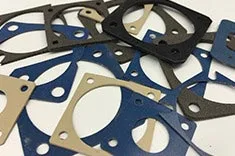EMI Shielding Products
- Custom Gasket Fabrication
- Connector Gaskets
- Bonded O Ring
- Custom Gaskets
- Conduct-O-Knit Knitted Wire Mesh
- Conduct-O-Seal Combo Gasket
- Conduct-O-Elastomer
- Conduct-O-Seal Oriented Wire in Silicone Gasket Material
- Conduct-O-Mesh Tape
- Conduct-O-Foam
- Conduct-O-Bond
- Optical Filters For Electronic Displays
- Shielded Vent Panels
- 300 Series
Material Options for RFI Shielding: Three Popular Metals
Not all EMI shields are built the same, which means that shields need to be custom constructed depending on the application and design of an electronic device. There are many considerations to make during the design process, including galvanic compatibility, budget, application environment, material thickness, and most importantly, material. The material option you choose for your devices plays a crucial role in how devices perform. Materials choice also affects the cost of shielding.

When thinking about material options, three types of metal are most used by electronic engineers. These three metals include:
Aluminum is a material that is ideal for a variety of applications because the metals boast non-ferrous properties. It is also known for its high conductivity ratings and its strength-to-weight ratio. Aluminum does also pose some fabrication challenges, such as oxidizing over time and poor solderability.
Copper is often considered the most reliable of all RFI shielding materials because it effectively attenuates electrical and magnetic waves. This material is often used in MRI facilities and other important computer equipment. This metal is costly when compared to the alternative shielding options.
RFI Shielding
Pre-Tin Plated Steel is an excellent low-cost solution when working with low frequencies in the kHz range. Tin plating offers exceptional levels of corrosion protection that protects against rusting. Plating tin also increases the solderable surface of the material.
Related Reading
- Preventing Interference with RFI Shields and RFI FiltersRFI shielding is the standard when it comes to suppressing the emission of RF shielding. Good electrical engineers incorporate shielding into their design as soon as possible.
- What is the Difference Between EMI and RFI
- What are the Differences Between EMI Shields and EMI Filters



